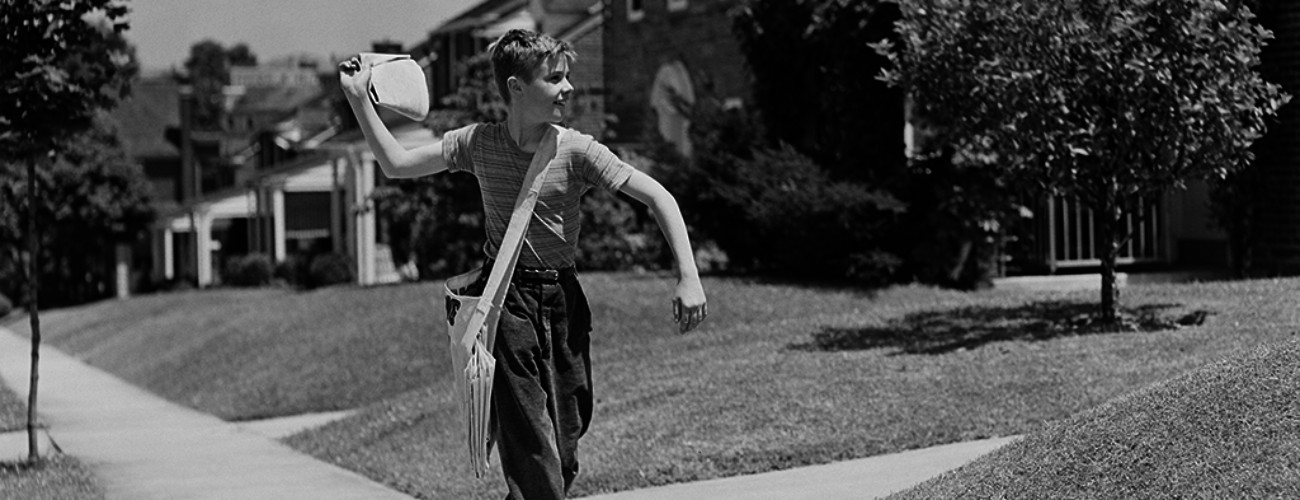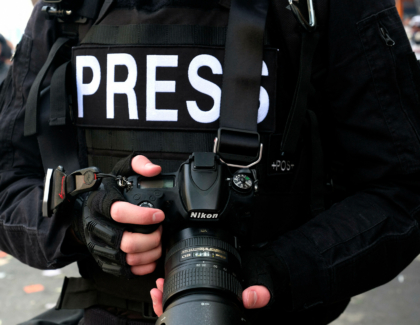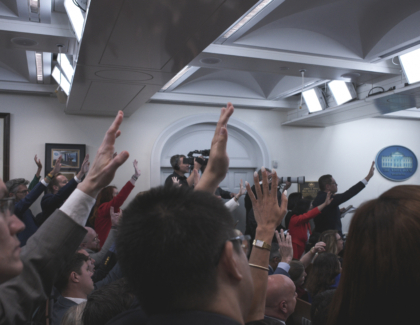Sign up for the daily CJR newsletter.
The net neutrality clock is ticking down to midnight. On Thursday, the Federal Communications Commission will vote on whether to roll back the neutrality protections the Obama administration put in place in 2015. Those rules prevent cable and telecom companies from charging more for certain kinds of content, or giving favorable treatment to specific sites and services.
The neutrality fight has drawn support from a number of quarters, including the geek community at Reddit, which has done a better job of covering the issue than many mainstream media outlets. The founders of the early internet—including Vint Cerf and web creator Sir Tim Berners-Lee—have spoken out against the move. FCC commissioner Jessica Rosenworcel even took the unusual step of begging voters to put a stop to the planned changes.
There is more than just a political battle at stake. A new report from Stanford’s Berkman Center for Internet and Society argues that if net neutrality disappears, it could have a significant negative effect on the local journalism market in the US. Author Adam Hersh says the market for local news is in an extremely fragile state, thanks in part to the decline of advertising, and the loss of net neutrality protections could hit local providers particularly hard.
Local journalism plays a vital civic role, Hersh says, because it is often the first source of information in a crisis and is backed by a depth of knowledge about local politics and culture. The risk is that a market without net neutrality “favors big players that can negotiate effectively with ISPs, and reduces content providers’ ability to innovate without permission,” since new efforts to reach readers or viewers—especially if they take the form of video or other bandwidth-heavy innovations—might be penalized by large carriers.
Here’s more on the issue and why it’s important:
- How the web is like radio: Smithsonian magazine looks at how the net neutrality debate has its roots in regulations that were originally designed for another new technology called radio.
- Trolling the chairman: FCC Commissioner Mignon Clyburn hid her message to FCC chairman Ajit Pai in recommended edits on the document rolling back net neutrality.
- Not you too, Canada! According to leaked documents, Canada’s biggest cable and telecom companies also want to roll back net neutrality provisions in that country, under the guise of fighting piracy.
- Students could suffer: If ISPs start to give preferential treatment to their own video content, or charge more for content from external sources, that could affect students who are using video to study, educators say.
- Comcast’s promise: The cable giant says it doesn’t plan to create paid “fast lanes” in order to give priority to certain kinds of traffic, but some—including the former chairman of the FCC—remain skeptical.
Other notable stories:
- Coverage of Democrat Doug Jones’s longshot win of a US Senate seat from Alabama noted The Washington Post’s meticulously reported November story about his opponent’s alleged encounters with young women.
- BuzzFeed’s Joseph Bernstein and Ryan Mac report on some leaked documents that appear to show how former White House adviser Steve Bannon and alt-right poster boy Milo Yiannopolous spent more than a year trying to come up with ways to wage war on Twitter, because they believed that it silenced conservative voices.
- The New York Times‘s Kevin Roose takes a look at the “parallel Internet” that members of the alt right have created for themselves, including websites, online services, and social-networking apps like Gab, and finds that for the most part they are “ghost towns, with few active users and no adult supervision.”
- Traffic magazine, which is published by paywall-management provider Piano Media, has a feature looking at Jessica Lessin, founder of technology news site The Information, and how she approaches running a publishing company that relies solely on subscriptions instead of advertising.
- According to an analysis by Parse.ly, a web traffic-measurement firm, Google is sending more traffic to publishers than Facebook, for the first time in years. The level of traffic the social network sends to the average publisher has fallen from 40 percent to 26 percent this year, while Google has risen to 44 percent from 34 percent.
- The Center for Media Engagement looked at what happens when media outlets include some of the “trust indicators” favored by the Trust Project (which is funded in part by Google). The indicators include bios for reporters, labels for analysis pieces, footnotes, and background about the story, and the study found readers said the publication was more reputable if it used some or all of those indicators.
ICYMI: Journalists aren’t as tied by NDAs as they think
Has America ever needed a media defender more than now? Help us by joining CJR today.







